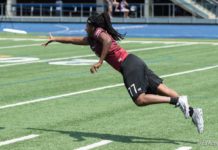Ultimate Canada Magazine – January 18, 2018
Written by: Mike Haddock
Seven days of elite competition, the worlds best athletes coming together on the other side of the world. And just like that, its over!
So, what is it like managing the Strength and Conditioning programs of three national teams spread across the country? What does the ‘behind the scenes’ look like?
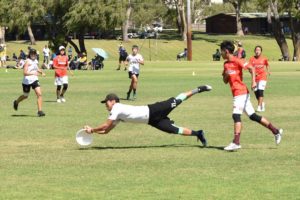
For starters, the very idea of preparing the U24 teams was incredibly exciting to me – after all, these athletes represent the future of our sport. Once I came to terms with my initial enthusiasm, I quickly turned my attention to the central challenge; what needed to be done to give consistent, high quality programming to literally hundreds of athletes across Canada? It was a daunting task, especially if you tend to be a perfectionist.
From the outset, we had to establish clear goals and values – what are the key benefits we can provide to these athletes?
- We wanted to provide education. We wanted athletes to understand common flaws or issues in key movements; so they saw WHY they got injured, anticipating that this would reduce prevalence and significance of injuries.
- We wanted to provide a sequence of progressive programs that built on successfully identified ‘key’ movements. By focusing on the most critical training elements, the athletes would gain the most on-field performance value from their efforts.
- And as a more personal goal, I was acutely aware that helping to establish excellent habits for these athletes could create patterns that would stay with them over their careers.
With these goals in mind, I began creating the plan that would guide the U24 program for the 13 months leading up to Perth. Based on the calendar, I divided up the Yearly Training Plan into three major phases.
Phase 1 – TC Prospects (prior to choosing Teams)
The initial programs for these prospects required an innovative approach. Since the rosters had not been determined, the primary purpose was to provide the candidates with an excellent base of fundamentals. Due to the unpredictable situation of prospects, I was forced to step back and asked myself, “if you could ONLY choose the most important exercises, where would you start?.”
By focusing our efforts on very specific elements, I was able to ensure that we didn’t overwhelm any athletes with too much information.
Overall, we accomplished what we set out to do – to provide over 150 prospects with a focused training direction.
Phase 2 – Teams Chosen, Giving Athletes Individual attention
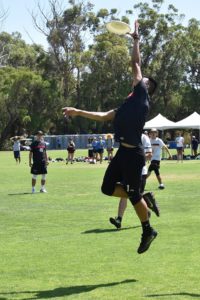
Once the three rosters were selected, it was important to take a more personal approach to make sure that each athlete had the individualized attention necessary for their development. Of the final 75 athletes, almost 50 were already enlisted in the program and were generally comfortable with the process and style of training. But for the remaining athletes it was up to me to make a connection, to try and reach out and see if there was anything I could do to help in their progress.
It takes time to build trust and respect, and even more so when you are not speaking ‘face to face.’ A part of gaining trust with athletes is to listen to their specific challenges, respond in a timely manner, and be prepared to be a ‘Jack of All Trades.’ Some of the unique obstacles that we had to overcome with our athletes was:
- How to maintain high intensity training with ‘x’ injury or issue
- How to create effective programming without a gym membership
- How to incorporate a program within a busy school/work/life calendar
- How to balance training with university Ultimate programs, and on-field demands
- How to managing Nutrition; such as general healthy eating, protein requirements, snack options, and intake timing
Phase 3 – Final Ramping up to Worlds
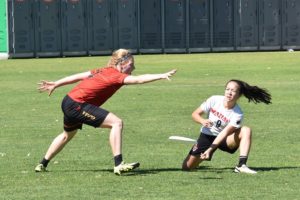
After the summer competitive season, we were collectively focusing on the final three month lead up to Worlds. Our programming changed to reflect the increased intensity of on-field execution. We made sure the athletes were focused on critical elements like top-end speed, jumping and plyometric power, and conditioning.
And as the calendar turned to the holiday season, we need to execute a sharp change in our training. I have always said, and demonstrated, that the Strength and Conditioning Coach also has a unique opportunity to influence the peak athlete performance in many ways. Our goal through December was to give the athletes information on:
- Creating, individualizing, and executing a Taper
- Educating the athletes on performance Nutrition; including carbohydrate loading, tournament nutrition, and strategies to reduce dehydration
- Reducing stress by providing packing lists and preparation packages
- Preparing the athletes in advance with time and temperature changes, and finding strategies to maintain peak health over the holidays
At the centre of HSP is the desire to demonstrate to each athlete that we are truly committed to their journey. We believe that it is honour and responsibility to give them the chance to realize their complete athletic potential. These athletes have done a remarkable job of representing the best of Canada and we look forward to watching them do so again in the years to come.
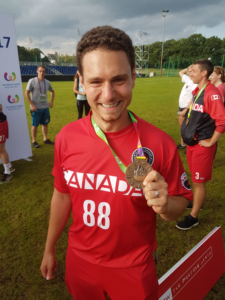 Mike Haddock is the owner of Haddock Sport Performance (HSP), and is the head Strength & Conditioning Coach for Ultimate Canada; overseeing the World Games (Bronze Medal) team & upcoming U24 & U20 Programs, as well as the Toronto RUSH/GOAT system. If you would like to learn more about HSP tips, technique, and work; follow HSP on Instagram!
Mike Haddock is the owner of Haddock Sport Performance (HSP), and is the head Strength & Conditioning Coach for Ultimate Canada; overseeing the World Games (Bronze Medal) team & upcoming U24 & U20 Programs, as well as the Toronto RUSH/GOAT system. If you would like to learn more about HSP tips, technique, and work; follow HSP on Instagram!

![International Women’s Day 2019 [Presented by VC Ultimate]](/c/wp-content/uploads/2019/03/unnamed-218x150.jpg)
